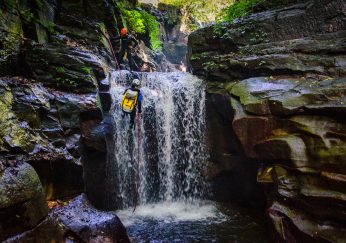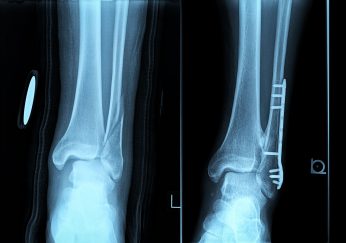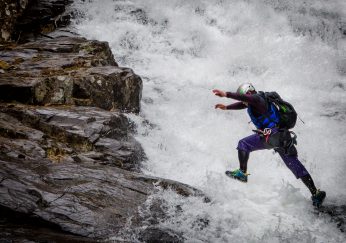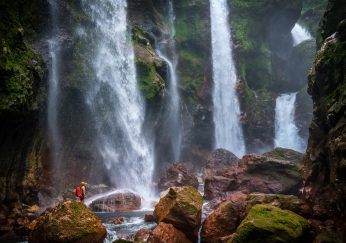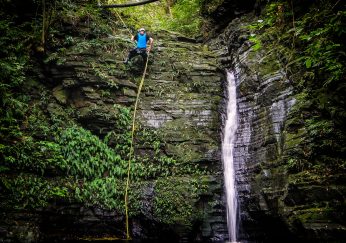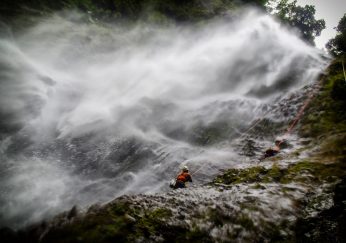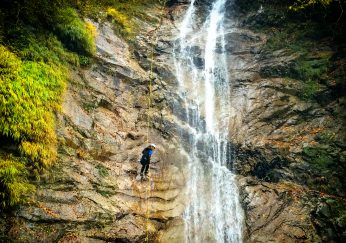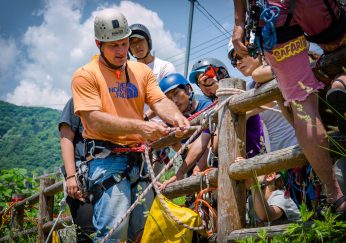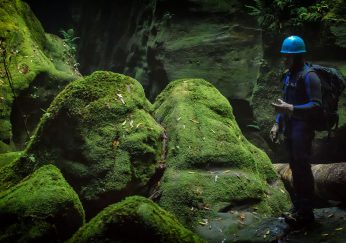Mordor Canyon is a beautiful canyon with spectacular volcanic landscapes. The canyon starts on the Poás Volcano (2040 m.a.s.l.), but it also receives water from a side of the extinct volcano named Von Frantzius. It is a short (2km) but technical route. The walls, made of volcanic rock, can get to a height of 200m. The risk of a sudden increase of water flow is increased by the geomorphologic and topographic characteristics of this canyon. In addition, the mountain has a very unpredictable climate.
The volcanic landscape and its formations are of a stunning beauty. The water is crystalline and possesses an amazing turquoise colour. The volcanic deposits where the river starts, give it its physicochemical composition.
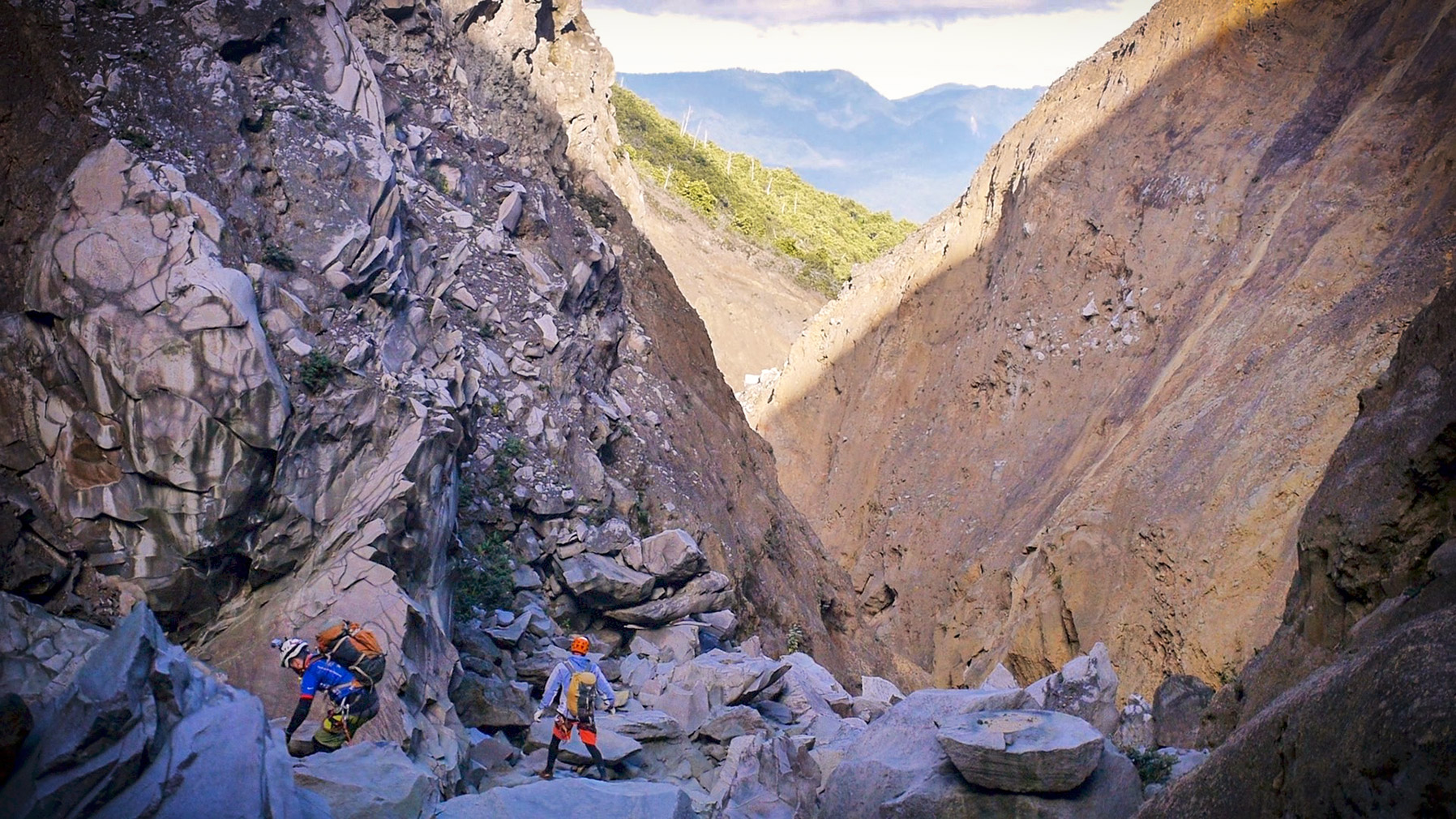
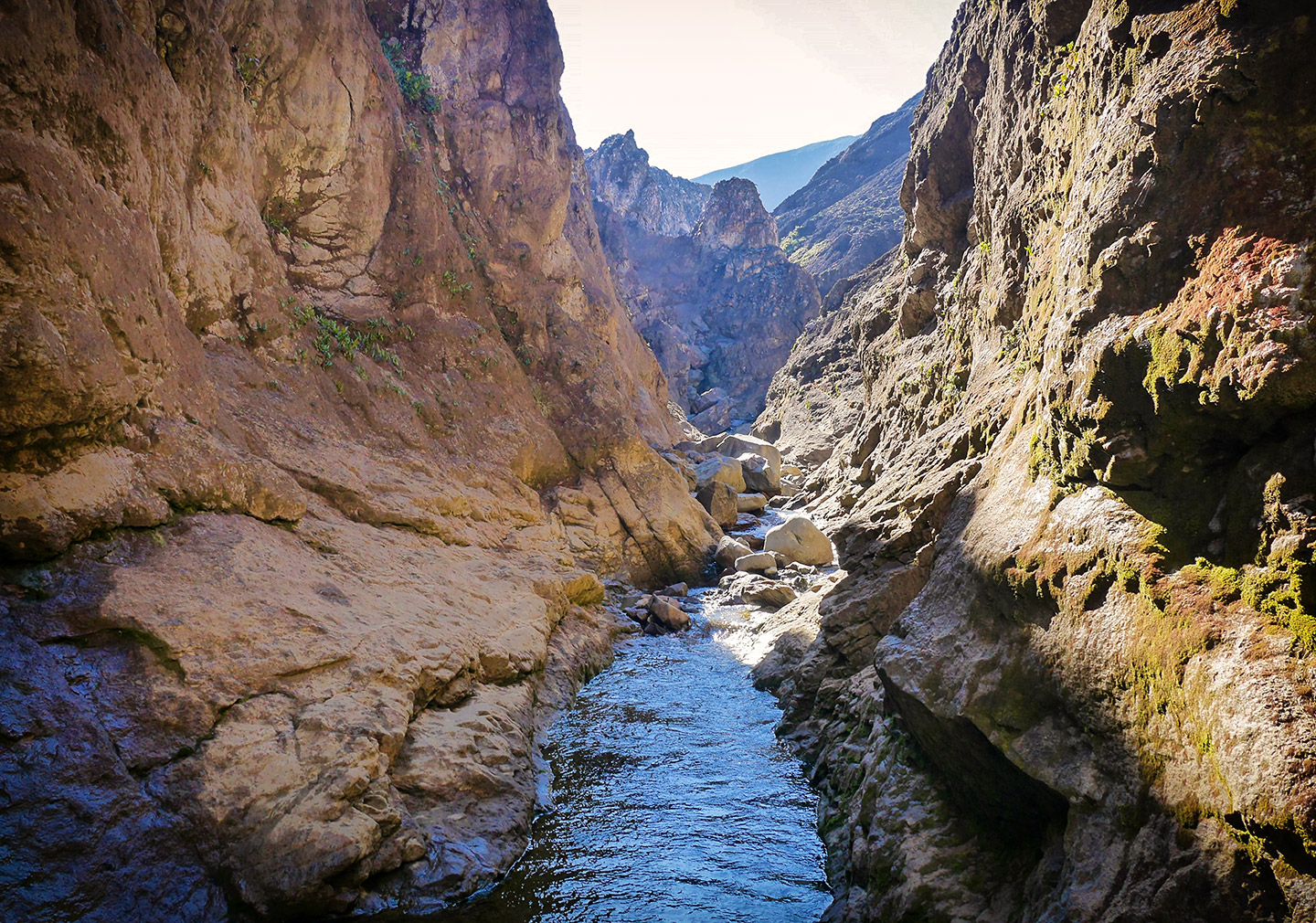
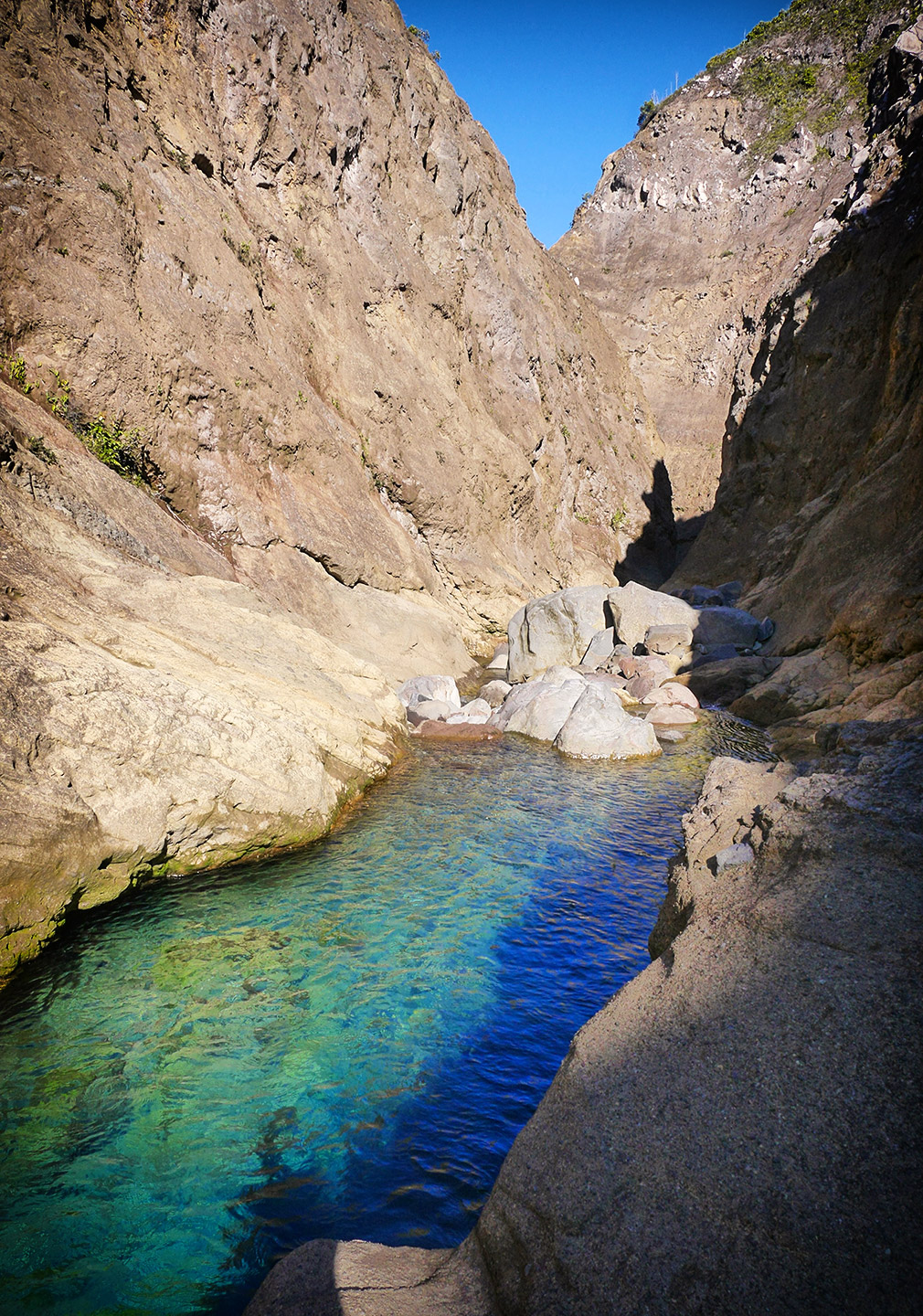
Group talk on the weather conditions, maps, motivation and final details.
At 5 a.m. on the 28th of May 2016 we began to hike to the base camp. We camped on the slopes of Poás Volcano, at about 1600m.a.s.l., so that we could enter the canyon early on the following day. At base camp we could enjoy some captivating views: the extinct Von Frantzius Volcano on one side, the Poás Volcano on the other.
After two hours of steep uphill hiking we were exhausted. The bags were heavy and the terrain was very slippery. We quickly set up base camp to enjoy the rest of the day and explore the middle part of the river. We walked about half an hour to get to the first waterfall. I was the first to experience the thermal shock. The temperature of the water ranged between 12 to 15 degrees Celsius. Through a water slide I passed on to one of three pools. The colour of the water was that of a blue I had never seen before. In addition, we had a team mate outside of the canyon on standby, in case of emergency or if we needed assistance.
We came across several wet, but not very technical, climbs. The sky turned cloudy at around 10 a.m., which worried us a bit. It threatened our objective to explore the upper part of the volcano. But we decided to carry on.
At midday we were happy, descending the first rappel which had a very good water flow and an interesting landing. There weren’t many options for the anchor, so we decided to build a natural anchor using a couple of small trees.
A few minutes later we encountered a second waterfall that was divided in three sections. The water was blown beautifully onto reddish volcanic rocks, forming a big cavity in the wall. In order to descend the first part of the last section we had to use the meat anchor technique. After we lowered the first team member, he verified the depth of the pool and showed us where it was safe to jump. Diving underwater in these cold waters to check for water depth was a shitty job. We then found another small waterfall with reddish rocks, which seemed nice to jump from. We decided to use the meat technique again to lower one of us. The other two just jumped down. The weather was getting worse.
There was no escape route so we had to continue. After about 200m we arrived at the final waterfall, a 60 to 70m beauty. The exit was technically challenging. We would have to install a handline, which would take too much time. It started to rain. We decided to look for an escape route. We started climbing but at a certain point had to stop, since the ground was not solid enough. Two of us were halfway up the climb on very unstable dirt walls. We were worried that the water level would rise and drag along our teammate who was still at the water level. The cold was also a concern. We realized the need for help from our teammate outside the canyon. We started whistling and continued until we were exhausted. Then, our teammate appeared, throwing down a line of rope for us to escape the canyon.
Choosing the escape had been a good decision. Just minutes after leaving the forest we heard a flash flood crashing down through the river.
Relieved, we took a short break as we felt the rain pouring down on us. Nightfall was coming. Base camp was about 45 minutes away. We needed to recover our strengths, because our expedition continued the next day.
27 May 2016

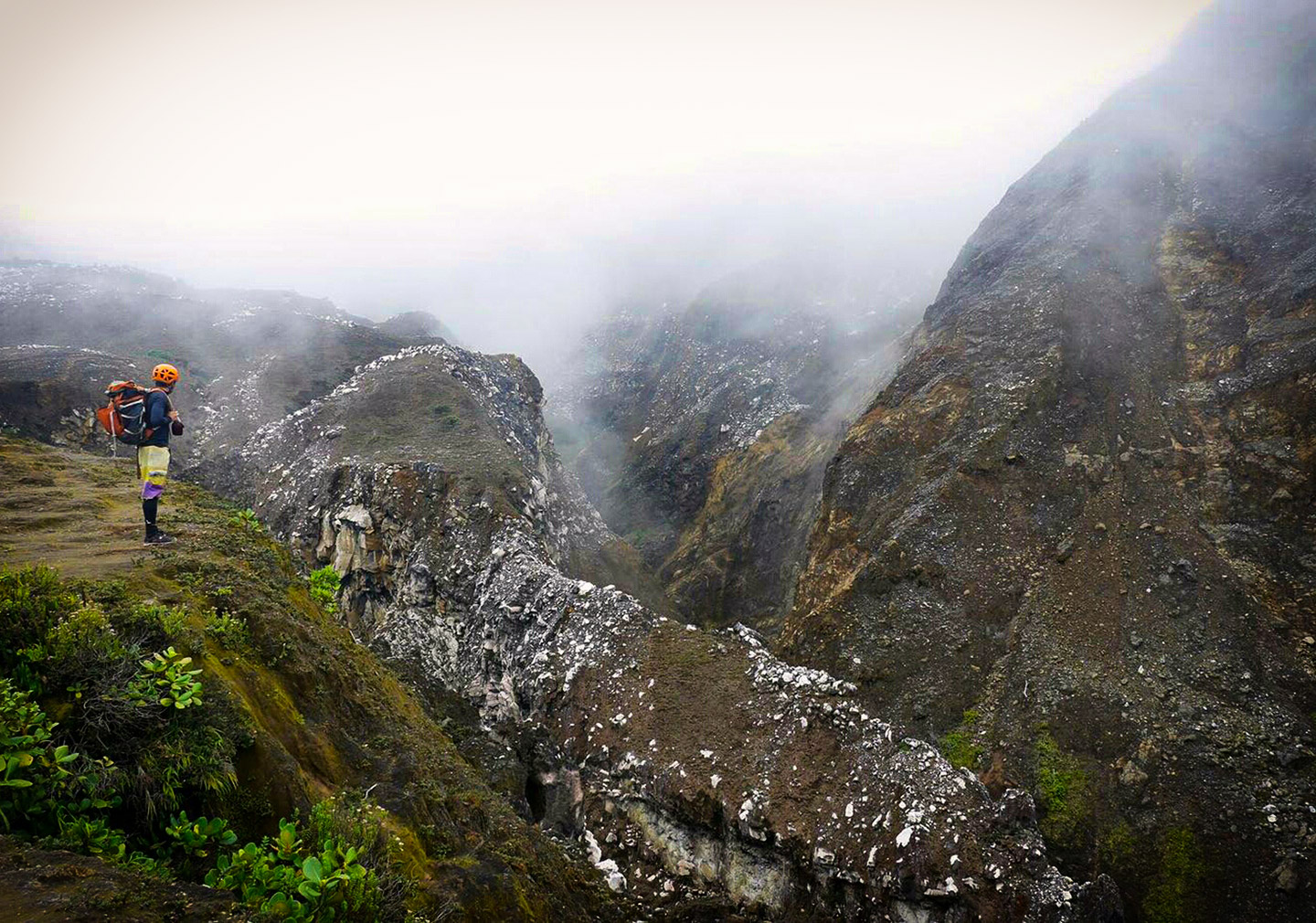
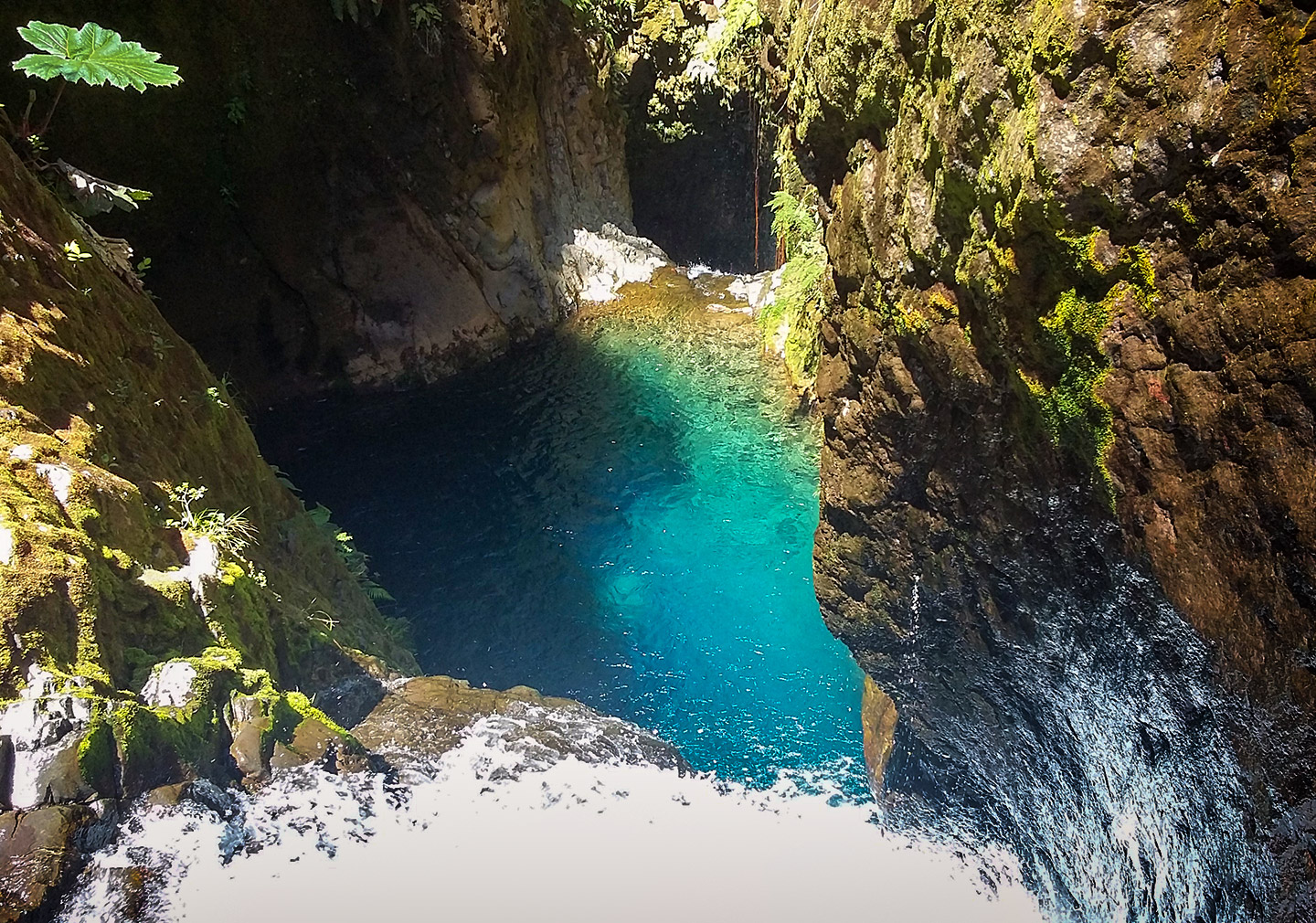
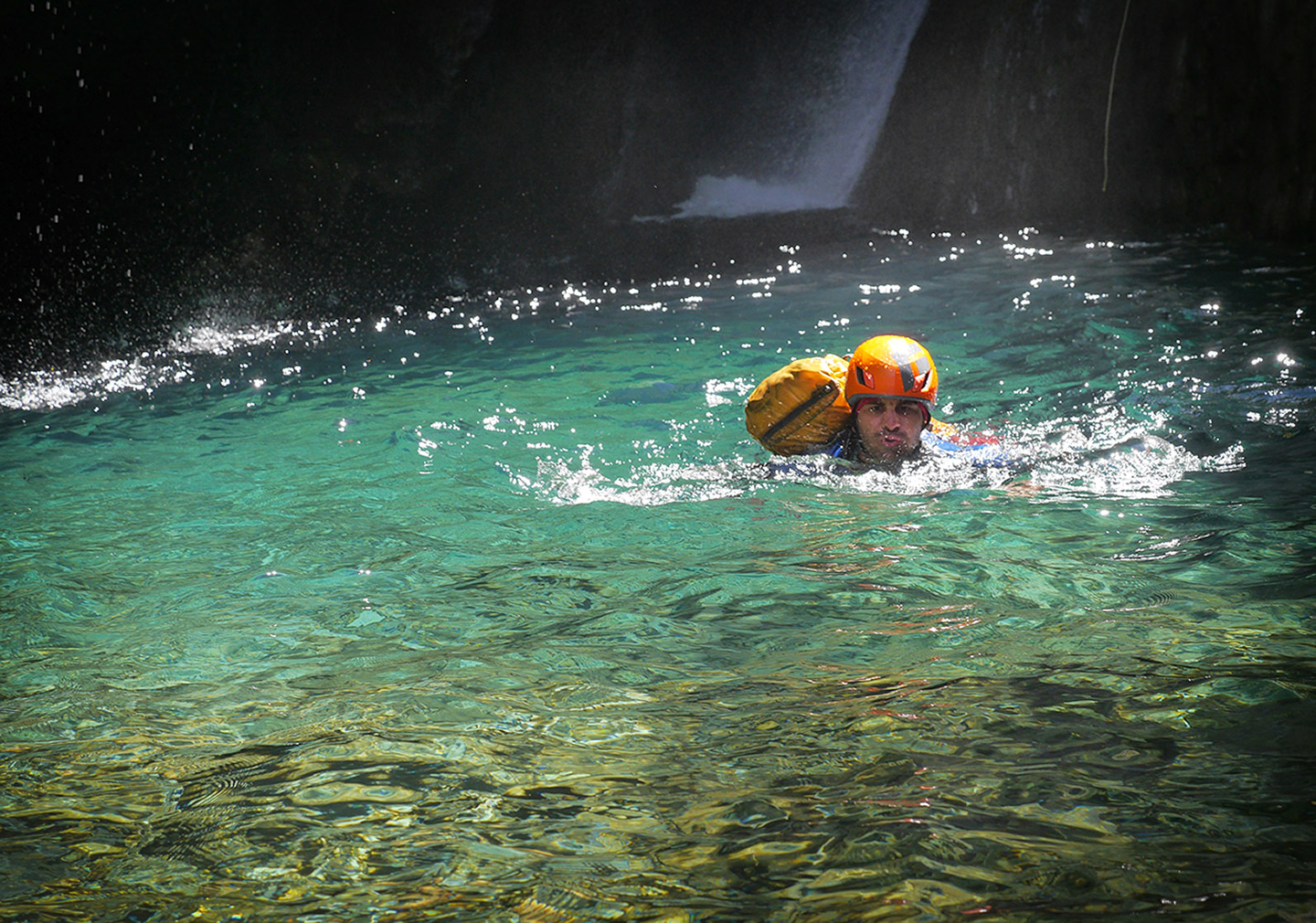
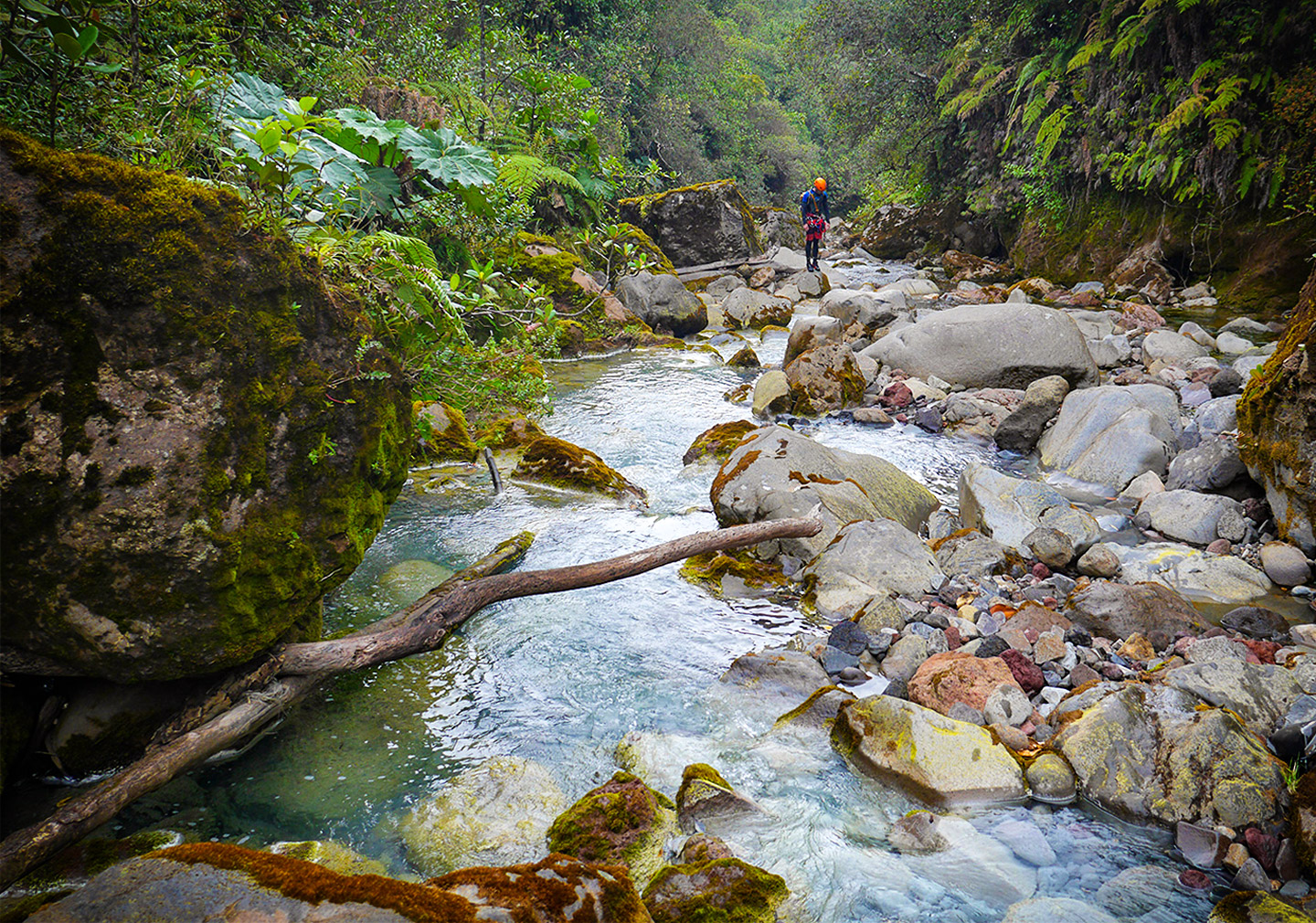
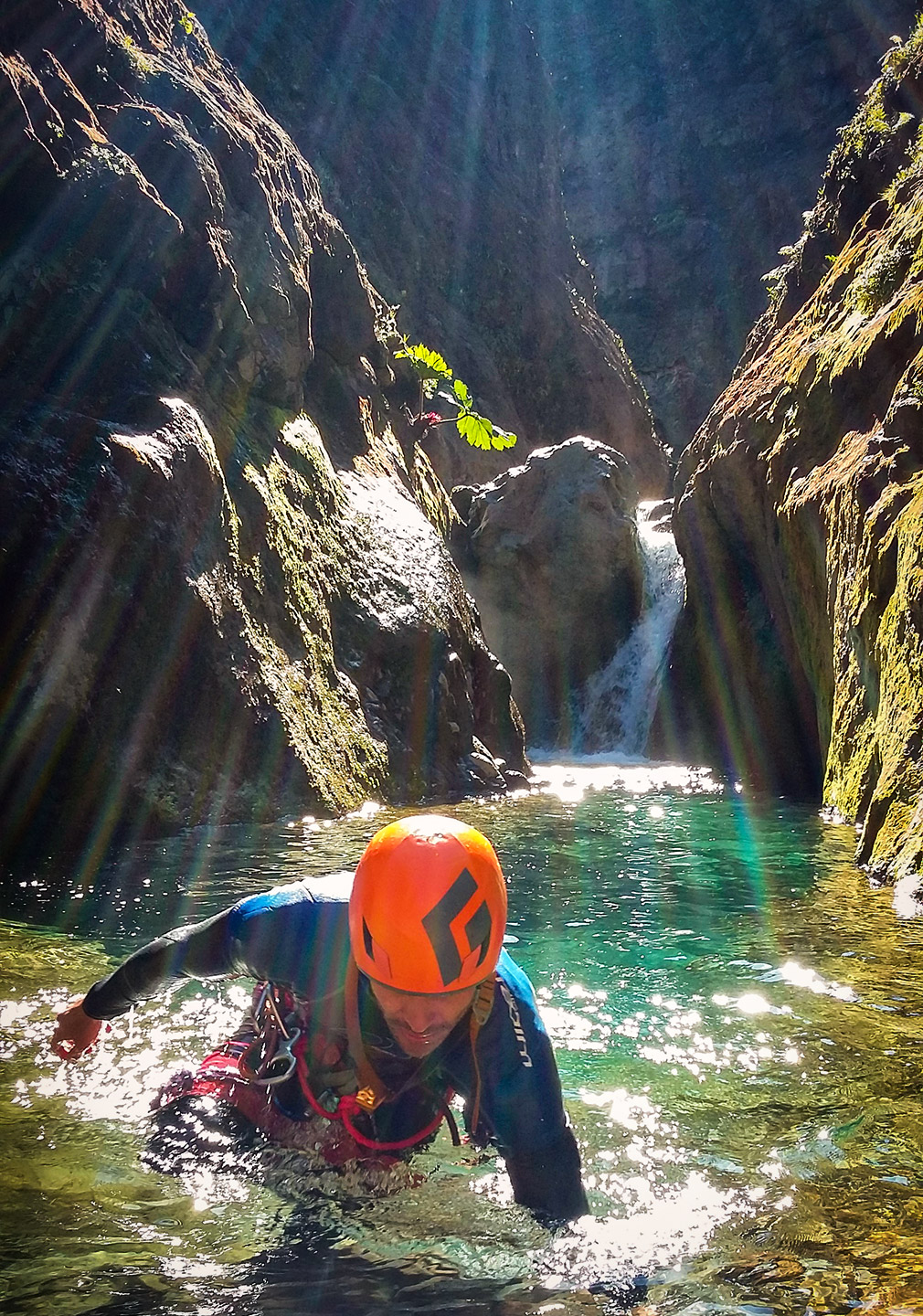
We were supposed to start the hike at 3.30 a.m. However, at around 3 o’clock the weather was looking bad. There was some heavy rain. We decided to sleep in, hoping to see the sun at dawn.
At 6 a.m. the rain had stopped and the sun started to show itself. We had breakfast, drank coffee and started on a two-hour hike following the “witches’ trail” towards the summit of Poás Volcano (2040 m.a.s.l.) and the beginning of the canyon.
At almost 9 a.m. we were preparing the drill and rigging material we needed for the first rappel. The weather, however, was still far from great.
We wanted to feel the inside of Mordor canyon, so we descended the first rappel. However, we limited the exploration of the canyon to the immediate surroundings. Three of us had already descended, but when the fourth team member started his descent, the sky above began to darken terribly. We weren’t able to get a good view of the initial stretch. This was the first attempt on Mordor’s amazing canyon at the top of the volcano. The weather didn’t change so we had to go back. We would have to wait until the next dry season.
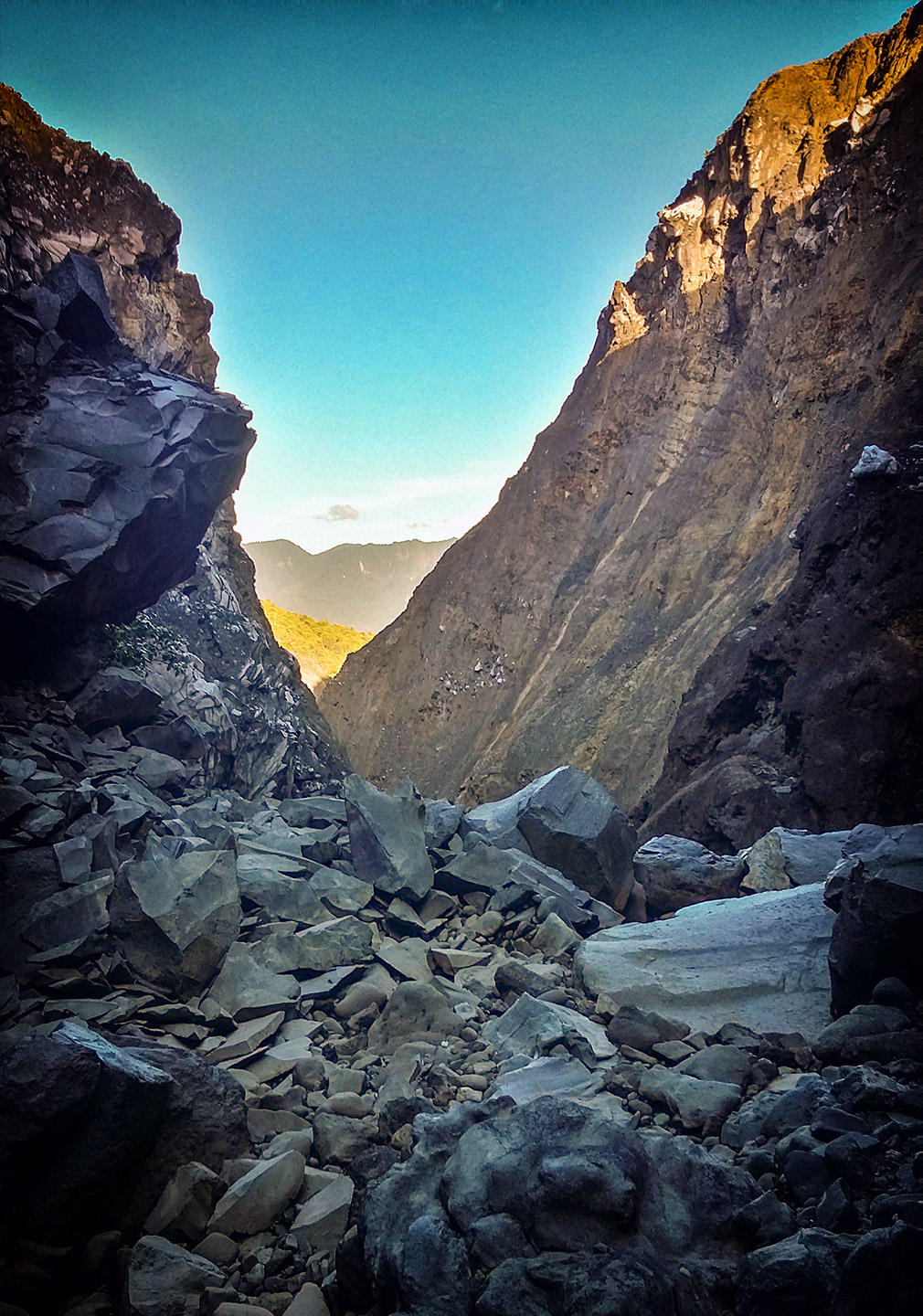

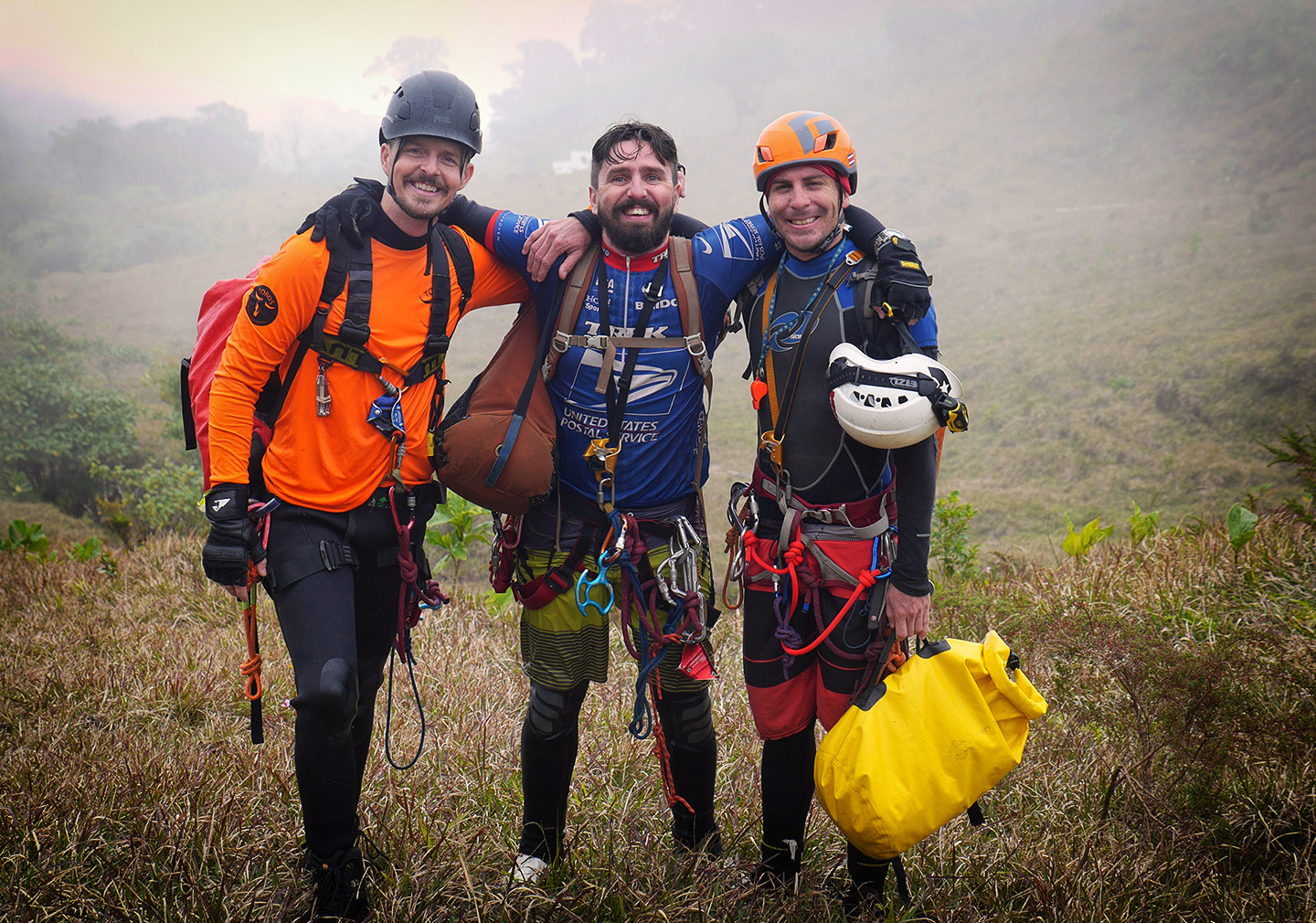
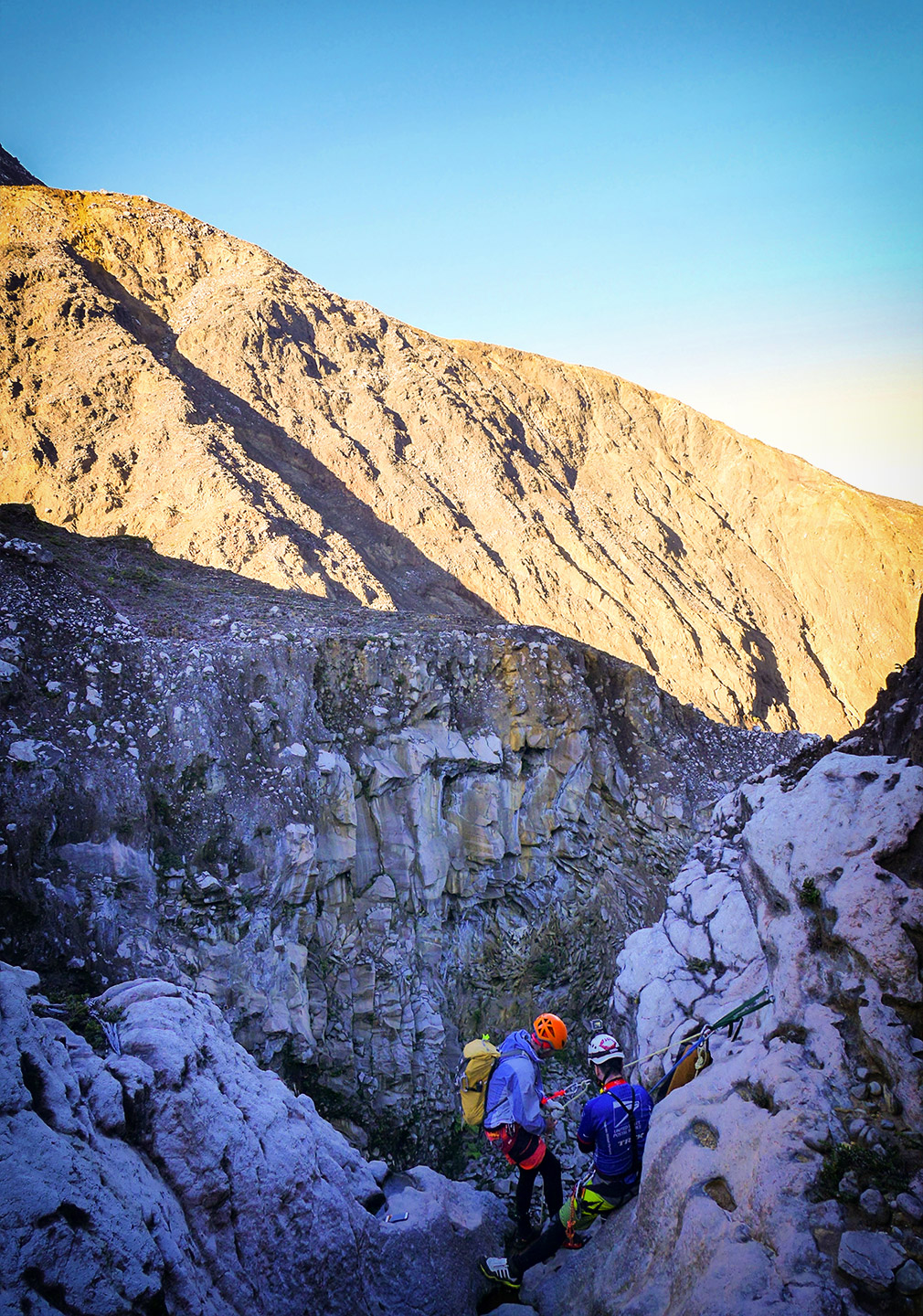
The team was headed for a second attempt to explore the impressive Mordor Canyon on the slopes of Poás Volcano, bordered by walls of more than 200m. This time we had studied the canyon with the help of a drone. We now knew the distance of the section, we were aware of several obstacles and we had discovered a section even more boxed in and dangerous.
The day before the exploration we turned our headlights on and started a night walk of about two hours. We wanted to camp on the foothills of Poás Volcano and Quemaderos. At around 9 p.m. we arrived and started preparing the backpacks, set up the hammocks, ate dinner and finally caught some sleep. At 3 a.m. our alarms would go off.
We ate breakfast and had two cups of coffee and at 3.30 a.m. we were off to the upper part of the volcano. Around 6.15 a.m. we were standing at the start of the canyon.
As a human being I need to admit that I felt a lot of stress once we descended the first rappel (6.50 a.m.). We were in a dilemma: leave a fixed rope in case we needed to escape and only explore the first section of the canyon or go until the end with no turning back.
The weather was perfect, there was not a single cloud, the sky was completely blue. The three of us decided to lower the rope and continue until the end. There was no turning back. In the bowels of Mordor there was no other way than to keep going until the exit.
We did have a team mate outside of the canyon on standby in case of an emergency. If the weather got really bad, he knew we would be looking for a safe zone (to avoid flash floods) to spend the night inside the canyon: a concern of ours because of the depth and narrowness of the canyon.
I felt the utmost respect for this canyon. Here, a mere twisted ankle would be a complete nightmare.
It was important to work on our mental attitude. The mindset needed to be strong: forward, we needed to keep moving forward, staying calm and analysing the best possible way to overcome each new obstacle.
We were aware that it was not possible to escape nor to be rescued quickly. Although we had a walkie talkie, the surroundings could complicate a rescue operation. The quantity and density of vegetation at the edge of the canyon and the enormous depth could block radio waves.
Two kilometres of imposing walls of volcanic rock were awaiting us, with depths from 150 to 200 meters and beautiful changes and contrasts in the landscape. The volcanic upper part looked like a desert. In the lower part we found a combination of volcanic rock with some upland vegetation. Next to this the water was crystal clear and possessed a turquoise colour I had never seen before.
We spent more than eight hours in the canyon, trapped in a slot canyon with a merciless depth. The deepest part of the slot was really intimidating. Undoubtedly, this was the very first time human beings had set foot in this canyon. Because we had to hurry, we didn’t have the time to document every rappel, but the number probably ranged between 15 and 20. The three of us were working together as a team to achieve our goal.
4 February 2017
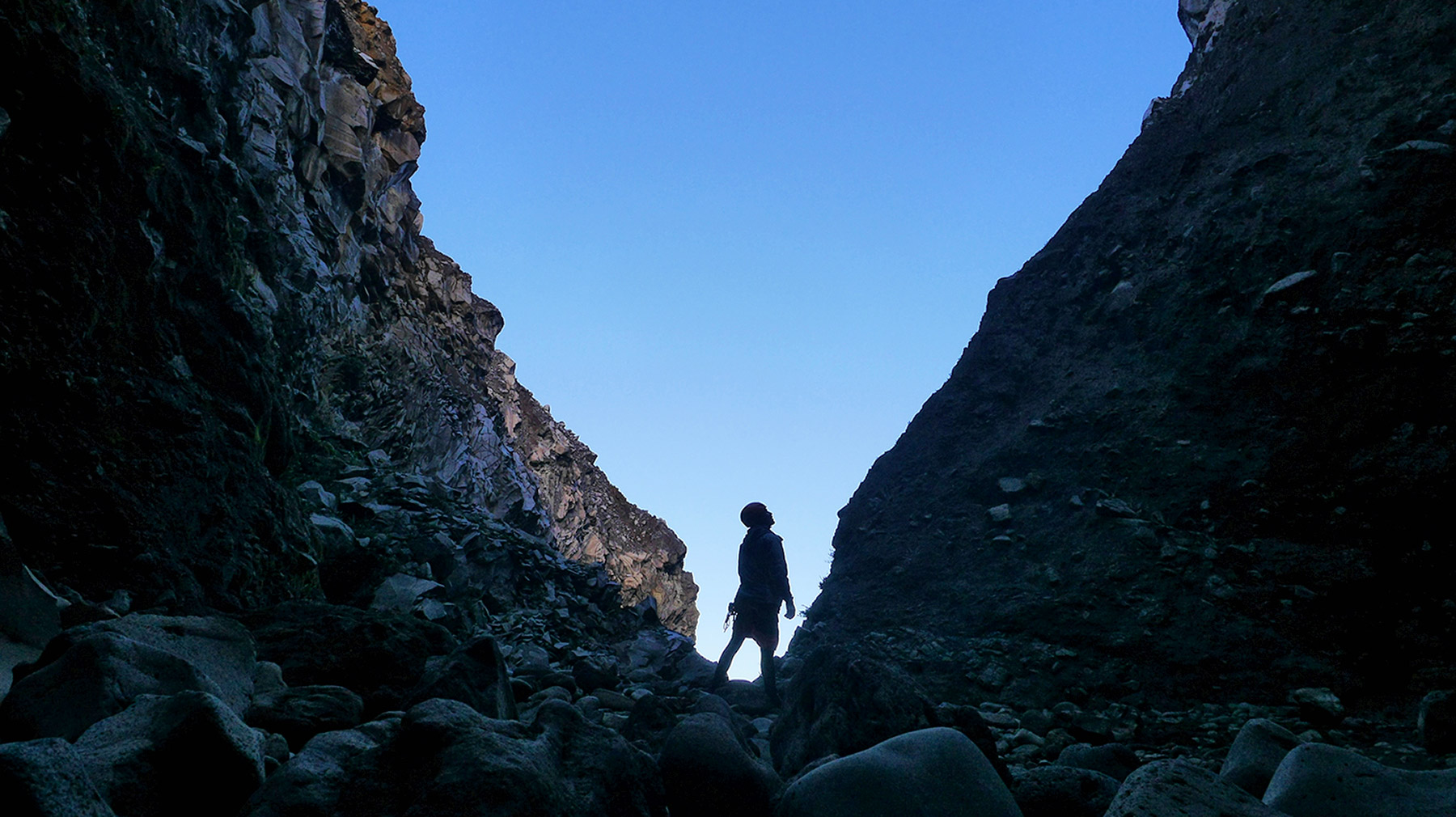
Although Costa Rica is a tropical country, this volcanic canyon is located at 2040 m.a.s.l. and the water temperature is quite cold. The 3mm wetsuits and 5mm neoprene socks we were wearing simply weren’t sufficient. The weather is extremely dynamic and treacherous here and that was one of our biggest concerns.
There is no forest or vegetation in the upper part of the volcano. As a consequence all of the rain drains directly into the canyon, triggering frequent flash floods. Five hours of fine weather. However, at noon things started to change violently. The clouds were moving fast. It looked very bad. Since we were in the deepest part of the slot, we worried about the possibility of heavy rain and flash floods.
We were on high alert: we had to move fast and exit as soon as possible. We were in a slot with four waterfalls in a row and there was no elevated safe zone in sight. We also didn’t like the idea of spending the night inside, not only because of the danger of flash floods but also because of the cold. It could turn out to be a very bad experience that would spiral out of control.
As we made progress we started running out of gear. There were many more rappels than we had initially envisioned. We had to be creative and smart in order to spare gear as we didn’t know how many more waterfalls and obstacles were ahead of us. We thought we would be facing the technical challenge of setting up the anchors for a handline, which requires a lot of material. So, on short rappels we used the meat anchor technique to avoid creating unnecessary anchors. We lowered down the first team member to check on the depth of the pool and identify where to jump. Then the others would jump. We also used logs jammed between rocks, webbing knot-chocks and many short rappels off a single bolt, using wet tape and no quick-link. We had to make some exceptions to the good canyoning practices.
When we got out of the box canyon, the joy and happiness we felt were beyond words. We realized that we had made it through the crux of the canyon and now there were only 500m to go prior to our planned exit point. We knew we were going to make it.
The final section’s gradient was very small. We discovered a small spring that fed into the river carrying minerals that gave the water its beautiful azure-white colour.
It took us about two hours more to get out of the canyon. We exited through the forest at 2.30 in the afternoon. After another half hour we arrived at the campsite where we could warm ourselves with a nice cup of coffee and replenish the salt and energy level in our bodies. We still had two hours left of hiking to get back down to the village.
The story of Mordor Canyon is an epic one. It was freaking awesome.
